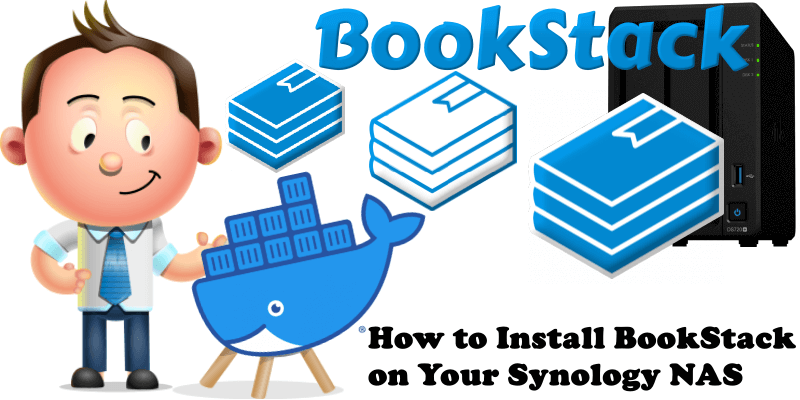
From now on you can become the author of your own book! All thanks to Dan Brown, the man behind BookStack, a free and open source Wiki designed for creating beautiful documentation. Featuring a simple, but powerful WYSIWYG editor, it allows for teams to create detailed and useful documentation with ease. Bookstack is a great alternative to DokuWiki that can be used for storing and organizing information and documentation. In this step by step guide I will show you how to install BookStack on your Synology NAS using Docker & Portainer.
STEP 1
Please Support My work by Making a Donation.
STEP 2
Install Portainer using my step by step guide. If you already have Portainer installed on your Synology NAS, skip this STEP. Attention: Make sure you have installed the latest Portainer version.
STEP 3
Make sure you have a synology.me Wildcard Certificate. Follow my guide to get a Wildcard Certificate. If you already have a synology.me Wildcard certificate, skip this STEP.
STEP 4
Go to Control Panel / Login Portal / Advanced Tab / click Reverse Proxy. Follow the instructions in the image below.
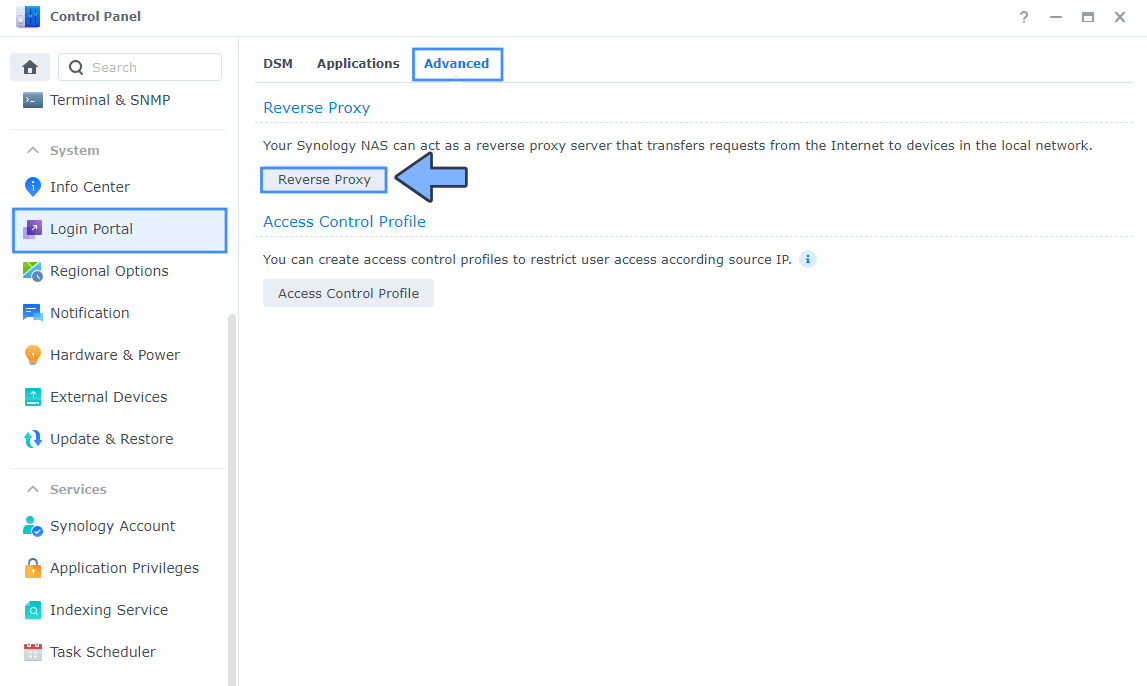
STEP 5
Now click the “Create” button. Follow the instructions in the image below.
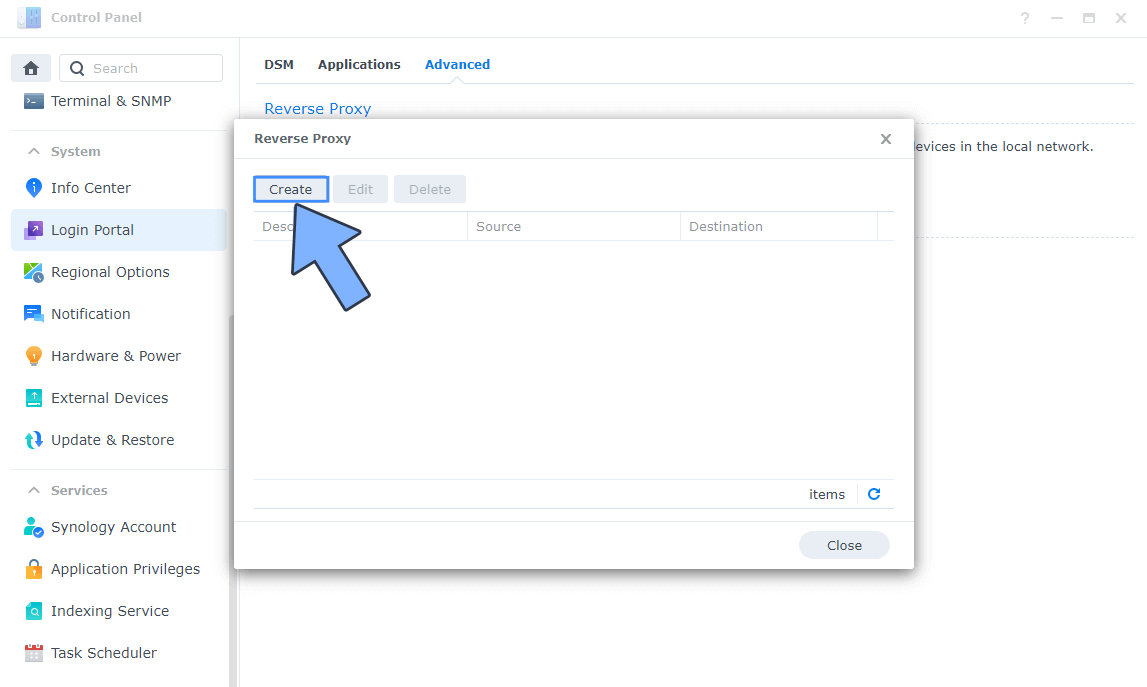
STEP 6
After you click the Create button, the window below will open. Follow the instructions in the image below.
On the General area, set the Reverse Proxy Name description: type in BookStack. After that, add the following instructions:
Source:
Protocol: HTTPS
Hostname: bookstack.yourname.synology.me
Port: 443
Check Enable HSTS
Destination:
Protocol: HTTP
Hostname: localhost
Port: 6875
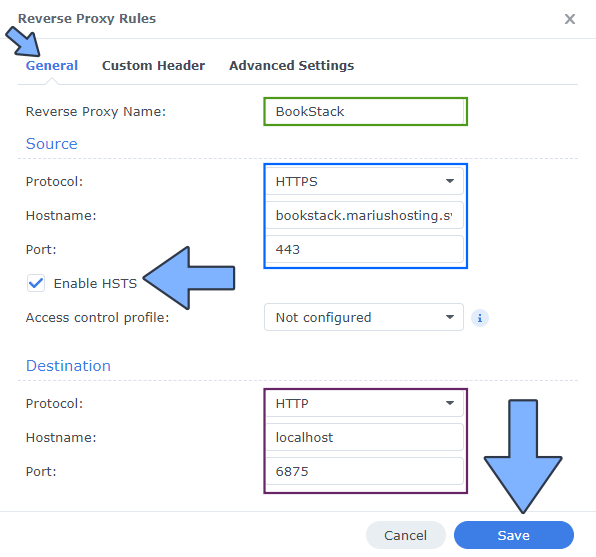
STEP 7
On the Reverse Proxy Rules, click the Custom Header tab. Click Create and then, from the drop-down menu, click WebSocket. After you click on WebSocket, two Header Names and two Values will be automatically added. Click Save. Follow the instructions in the image below.

STEP 8
Go to Control Panel / Network / Connectivity tab/ Check Enable HTTP/2 then click Apply. Follow the instructions in the image below.
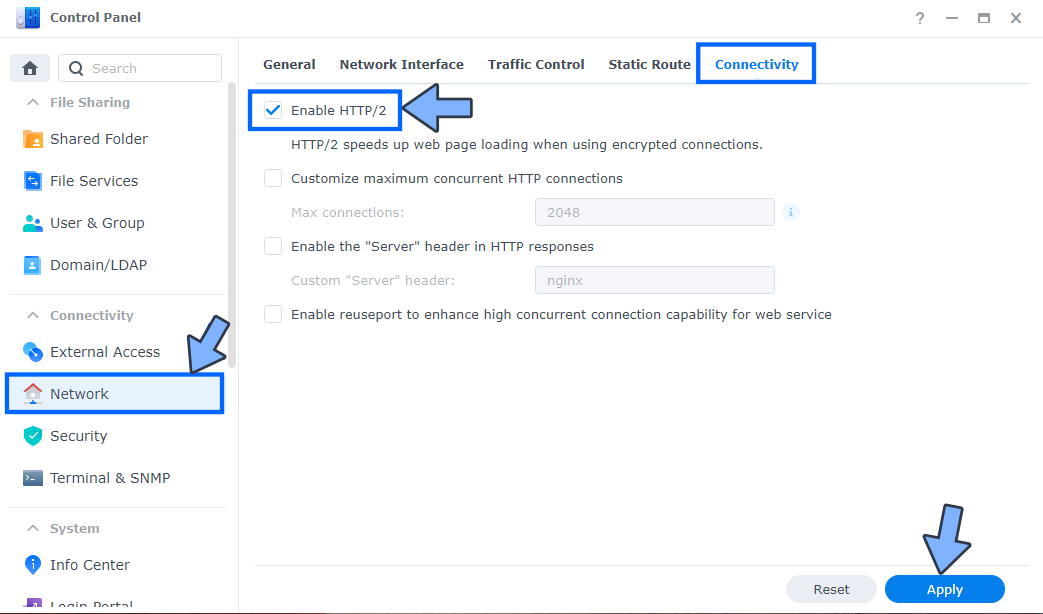
STEP 9
Go to Control Panel / Security / Advanced tab/ Check Enable HTTP Compression then click Apply. Follow the instructions in the image below.
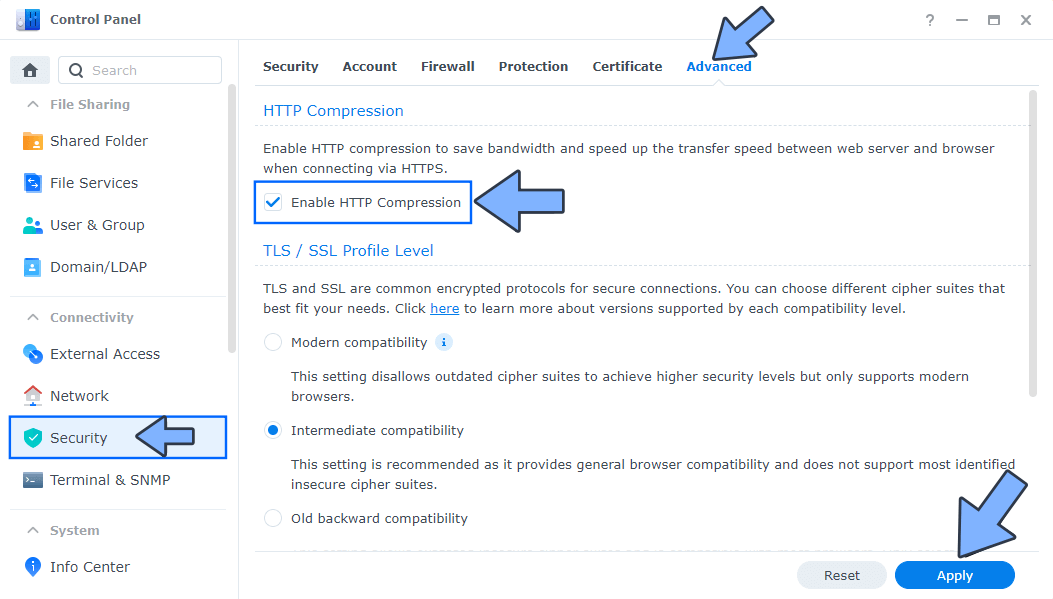
STEP 10
Go to File Station and open the docker folder. Inside the docker folder, create one new folder and name it bookstack. Follow the instructions in the image below.
Note: Be careful to enter only lowercase, not uppercase letters.

STEP 11
Now create three new folders inside the bookstack folder that you created at STEP 10 and name them db, storage-uploads, uploads. Follow the instructions in the image below.
Note: Be careful to enter only lowercase, not uppercase letters.
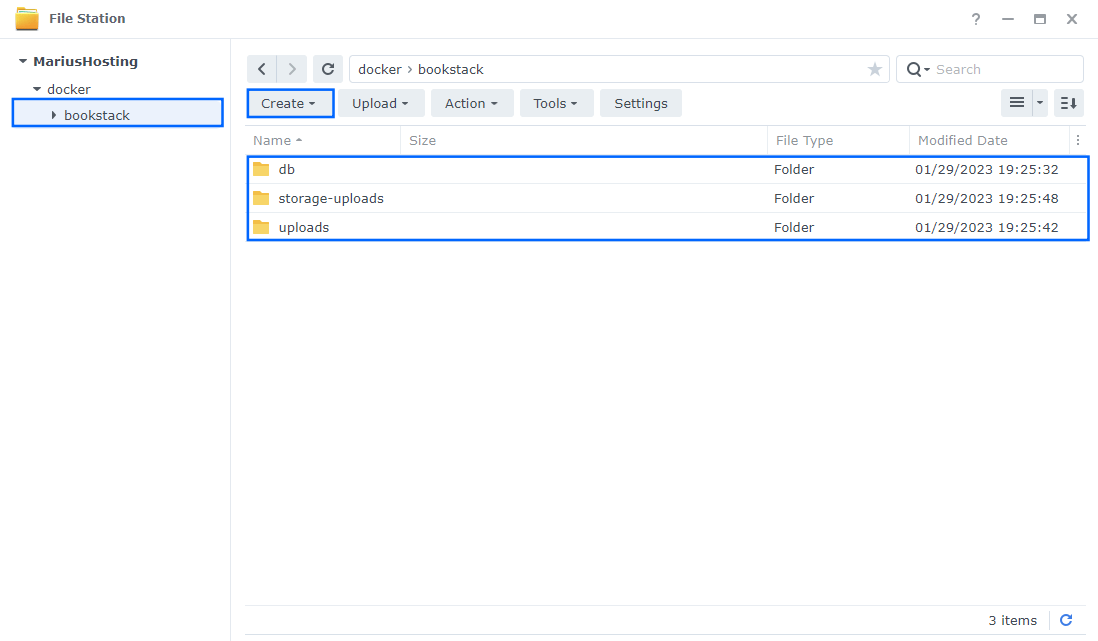
STEP 12
Download (click on the blue link below) and upload the my.cnf file below in the db folder that you have previously created at STEP 11. Follow the instructions in the image below. 🔒Note: Support my work to unlock the password. You can use this password to download any file on mariushosting forever!
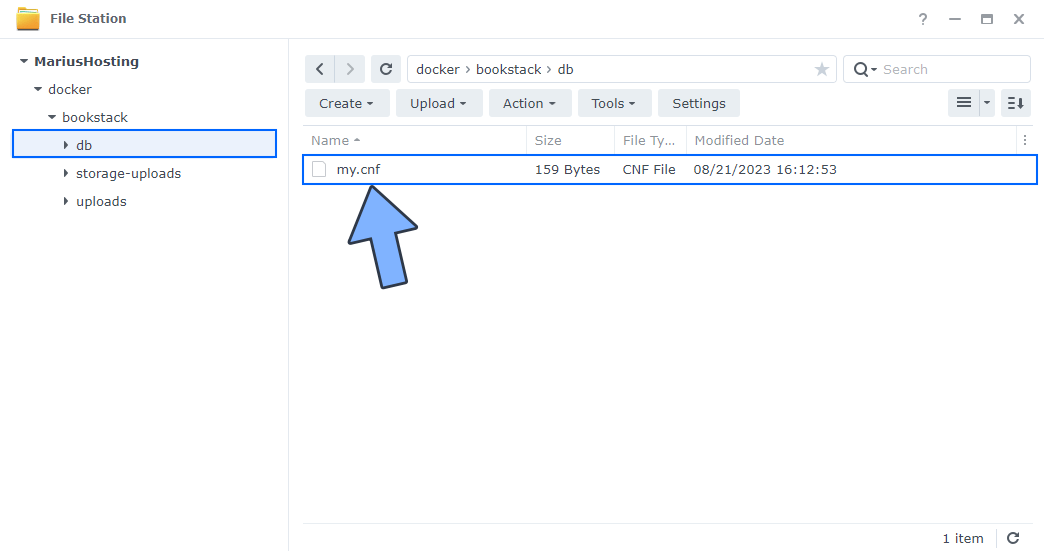
STEP 13
Right click on the uploads folder that you have previously created at STEP 11 then click Properties. Follow the instructions in the image below.
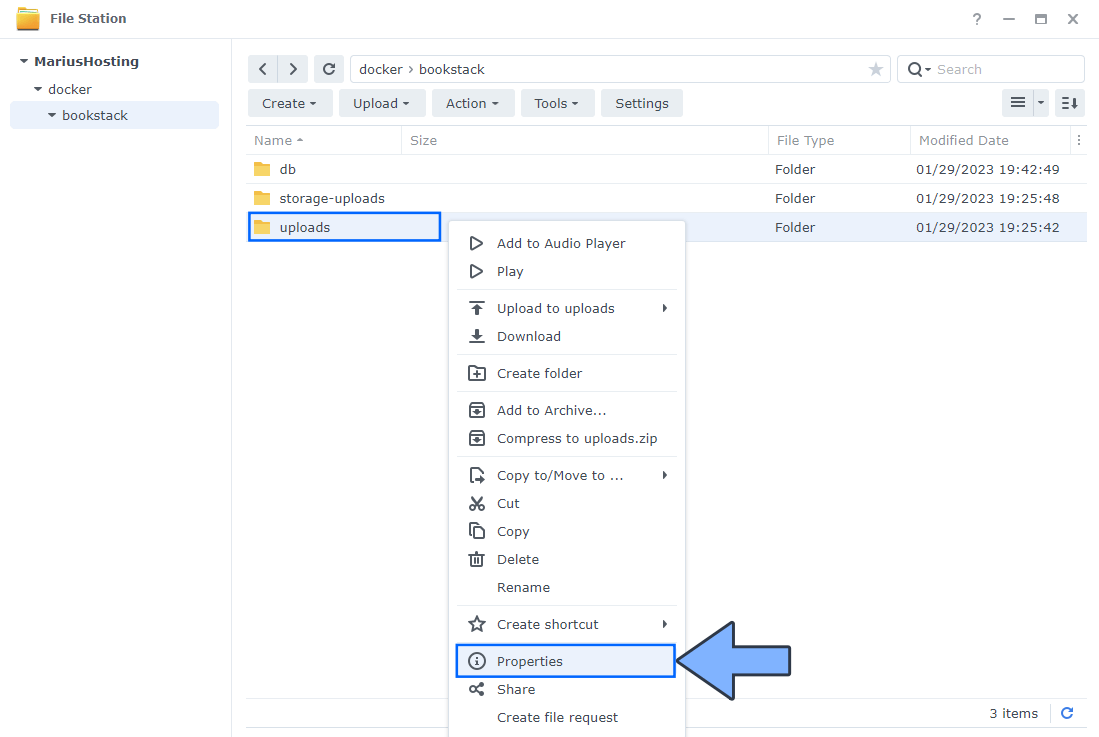
STEP 14
Go to the Permission tab, then click Advanced options. From the drop-down menu, choose “Make inherited permissions explicit“. Follow the instructions in the image below.
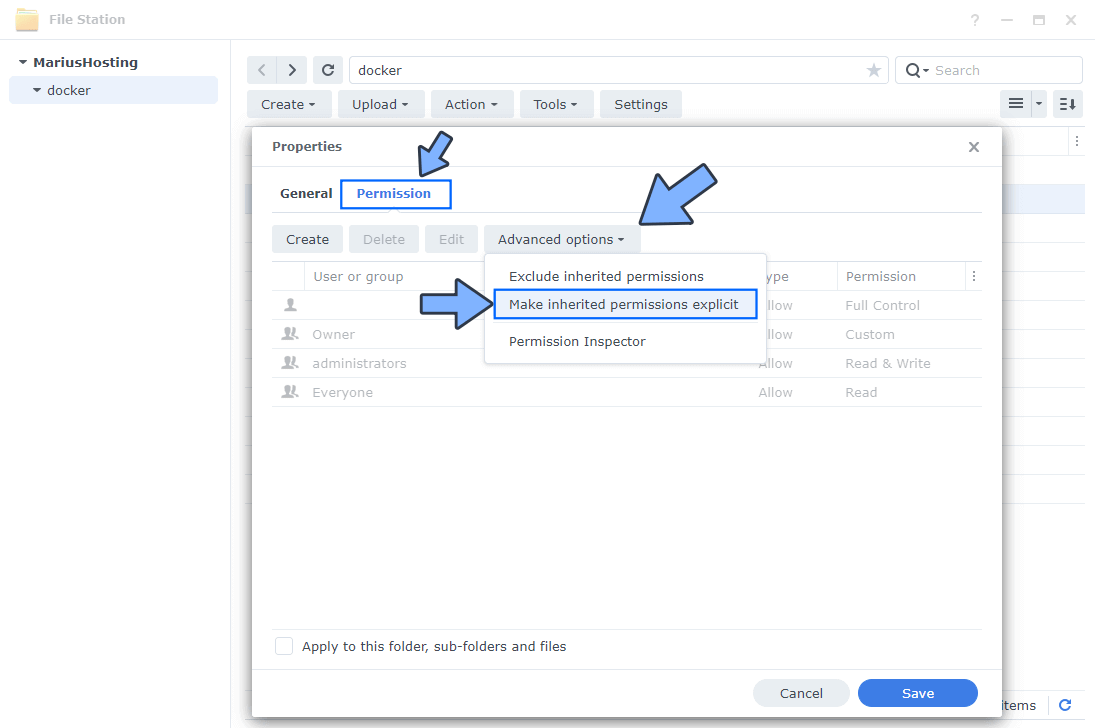
STEP 15
Select Everyone then click the Edit tab. Follow the instructions in the image below.
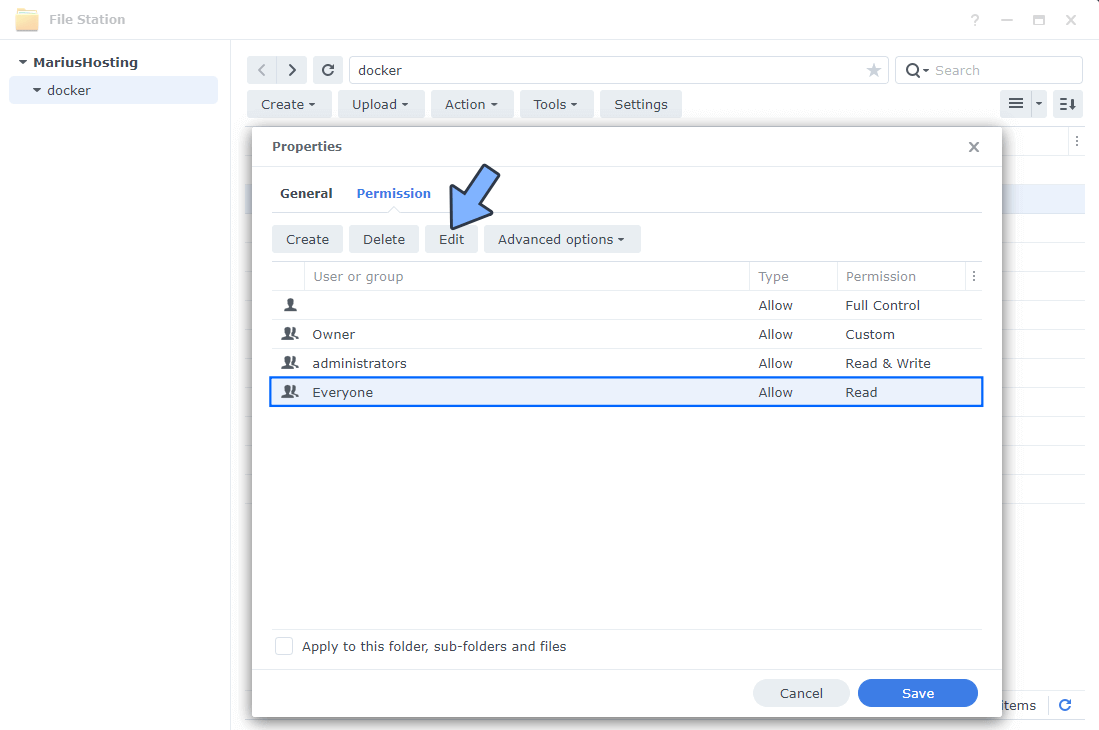
STEP 16
Check all Read and Write Permissions. Click Done. Follow the instructions in the image below.
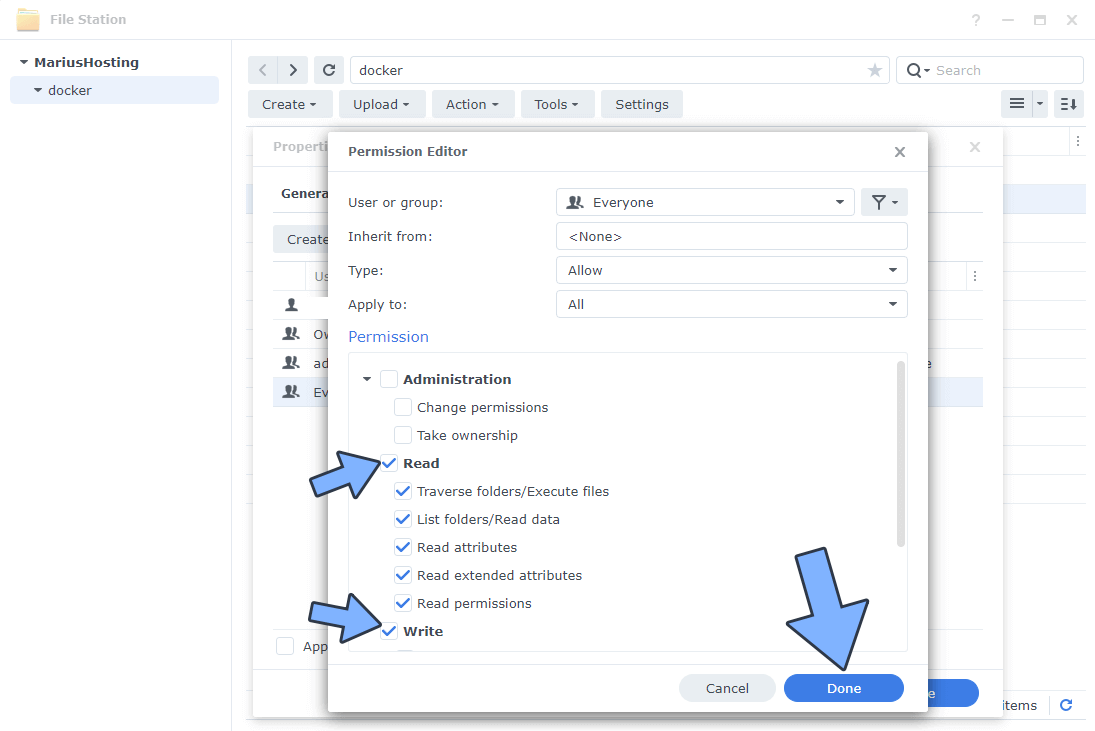
STEP 17
After you click Done on STEP 16, check “Apply to this folder, sub-folders and files“. Click Save. Follow the instructions in the image below.
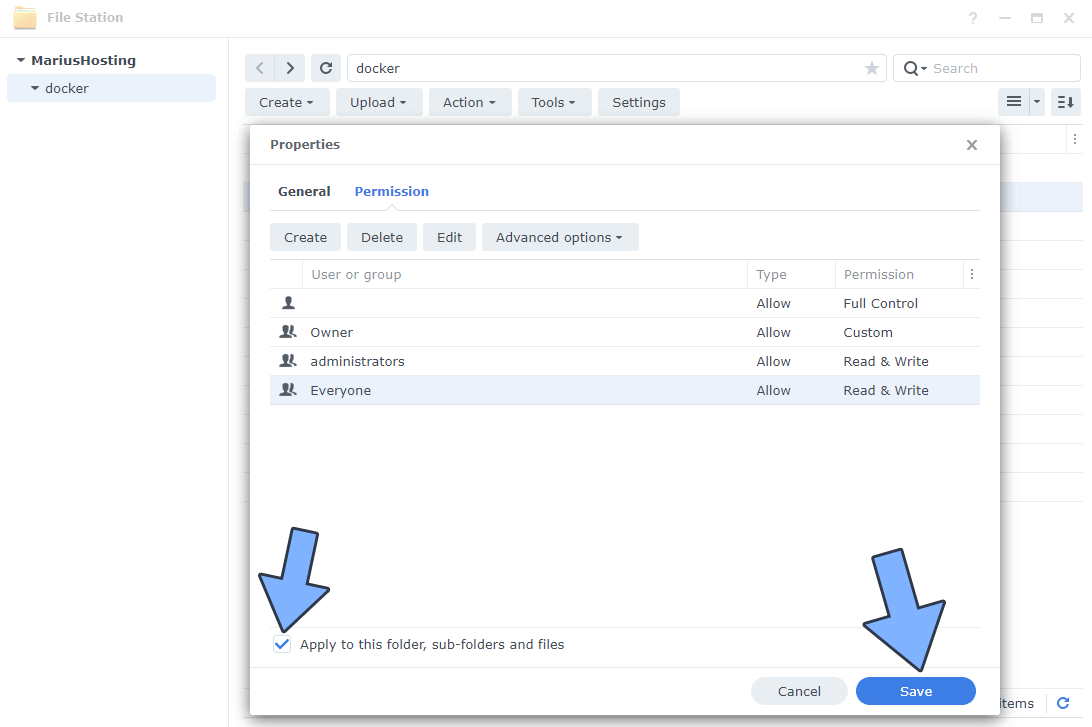
STEP 18
Right click on the storage-uploads folder that you have previously created at STEP 11 then click Properties. Add the Everyone permission to that folder too, just like you did with the uploads folder.
STEP 19
Follow my step by step guide on how to activate SMTP for your Gmail account. This step is mandatory. Note: If you don’t want to use the easiest way for SMTP with Google and you already have SMTP details from your own Mail Server, you can just skip this STEP and use your personalized email SMTP details instead.
STEP 20
Log into Portainer using your username and password. On the left sidebar in Portainer, click on Home then Live connect. Follow the instructions in the image below.

On the left sidebar in Portainer, click on Stacks then + Add stack. Follow the instructions in the image below.

STEP 21
In the Name field type in bookstack. Follow the instructions in the image below.
services:
db:
image: mariadb:11.4-noble #LTS Long Time Support Until May 29, 2029.
container_name: BookStack-DB
hostname: bookstack-db
healthcheck:
test: timeout 10s bash -c ':> /dev/tcp/127.0.0.1/3306' || exit 1
interval: 10s
timeout: 5s
retries: 3
start_period: 90s
security_opt:
- no-new-privileges:false
volumes:
- /volume1/docker/bookstack/db:/var/lib/mysql:rw
- /volume1/docker/bookstack/db:/etc/mysql/conf.d:rw
environment:
TZ: Europe/Bucharest
MYSQL_ROOT_PASSWORD: rootpass
MYSQL_USER: bookstackuser
MYSQL_PASSWORD: bookstackpass
MYSQL_DATABASE: bookstack
restart: on-failure:5
bookstack:
image: solidnerd/bookstack:latest
container_name: BookStack
hostname: bookstack
security_opt:
- no-new-privileges:true
ports:
- 6875:8080
volumes:
- /volume1/docker/bookstack/uploads:/var/www/bookstack/public/uploads:rw
- /volume1/docker/bookstack/storage-uploads:/var/www/bookstack/storage/uploads:rw
environment:
DB_HOST: bookstack-db:3306
DB_DATABASE: bookstack
DB_USERNAME: bookstackuser
DB_PASSWORD: bookstackpass
APP_KEY: base64:YnFsamt2aDBocDNyZGQxb2YyMng0cGlpcXo1NGFiNWc=
APP_URL: https://bookstack.yourname.synology.me
MAIL_DRIVER: smtp
MAIL_HOST: smtp.gmail.com
MAIL_PORT: 465
MAIL_ENCRYPTION: tls
MAIL_USERNAME: Your-own-gmail-address
MAIL_PASSWORD: Your-own-app-password
MAIL_FROM: Your-own-gmail-address
MAIL_FROM_NAME: BookStack
restart: on-failure:5
depends_on:
db:
condition: service_started
Note: Before you paste the code above in the Web editor area below, change the value for TZ. (Select your current Time Zone from this list.)
Note: Before you paste the code above in the Web editor area below, change the value for APP_KEY and type in your own APP_KEY. Generate your free APP_KEY using the online Laravel APP KEY GENERATOR WEBSITE.
Note: Before you paste the code above in the Web editor area below, change the value for APP_URL and type in your own synology.me DDNS with https:// at the beginning that you have previously created at STEP 6.
Note: Before you paste the code above in the Web editor area below, change the value for MAIL_USERNAME and type in your own Gmail address. STEP 19.
Note: Before you paste the code above in the Web editor area below, change the value for MAIL_PASSWORD and type in your own Gmail app password. STEP 19.
Note: Before you paste the code above in the Web editor area below, change the value for MAIL_FROM and type in your own Gmail address. STEP 19.
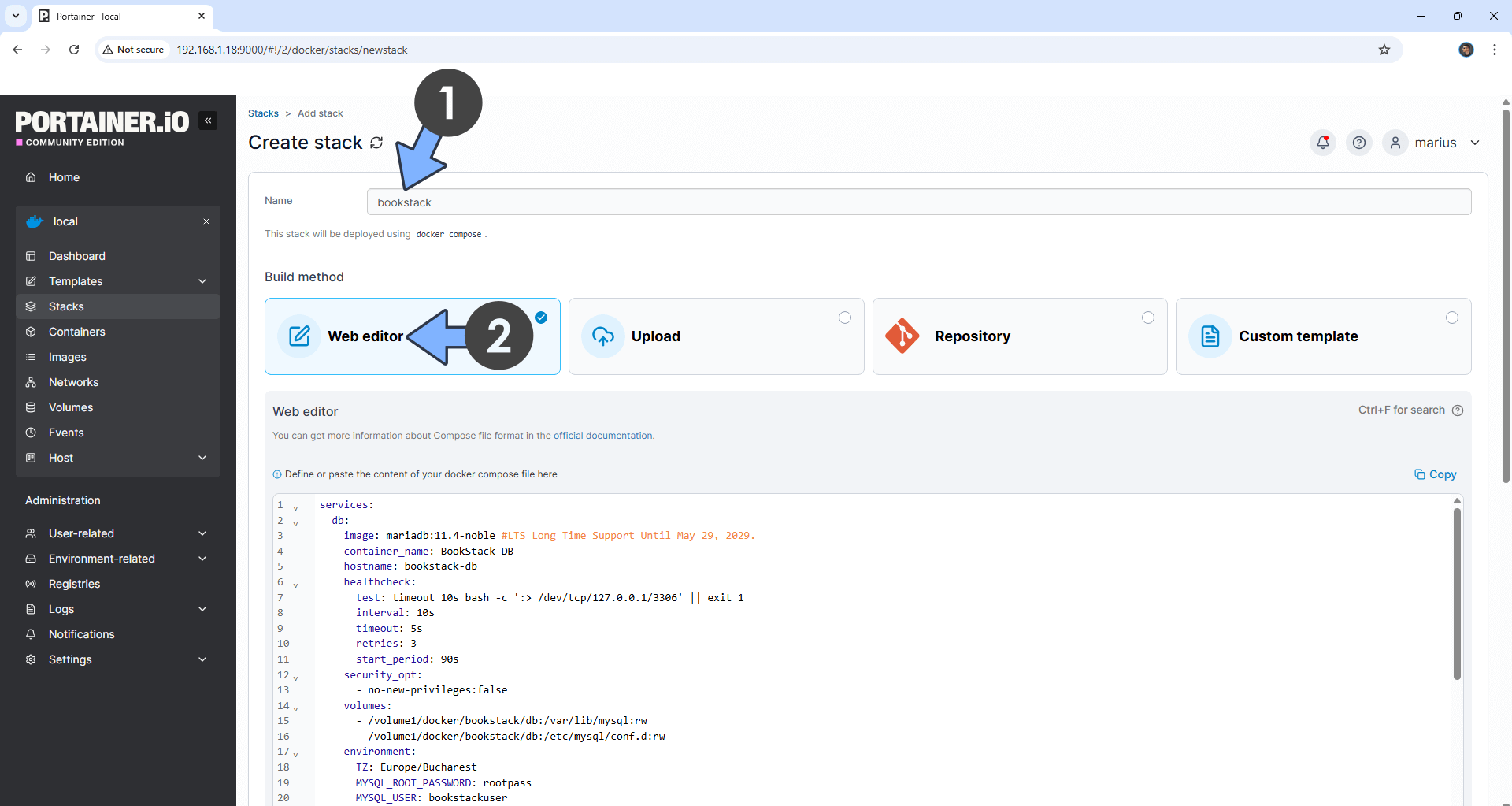
STEP 22
Scroll down on the page until you see a button called Deploy the stack. Click on it. Follow the instructions in the image below. The installation process can take up to a few minutes. It will depend on your Internet speed connection.
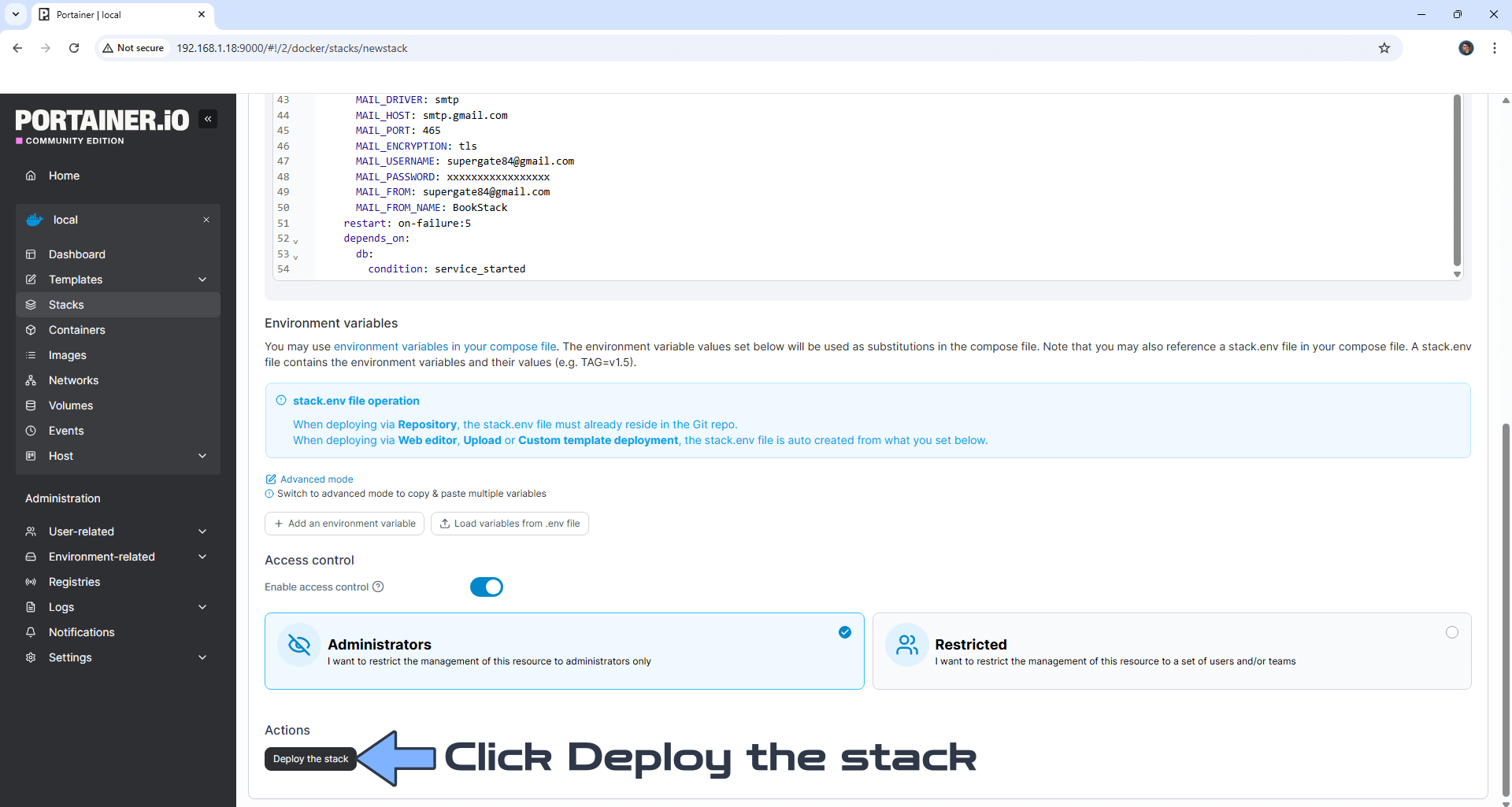
STEP 23
If everything goes right, you will see this message at the top right of your screen: “Success Stack successfully deployed“.

STEP 24
🟢Please Support My work by Making a Donation. Almost 99,9% of the people that install something using my guides forget to support my work, or just ignore STEP 1. I’ve been very honest about this aspect of my work since the beginning: I don’t run any ADS, I don’t require subscriptions, paid or otherwise, I don’t collect IPs, emails, and I don’t have any referral links from Amazon or other merchants. I also don’t have any POP-UPs or COOKIES. I have repeatedly been told over the years how much I have contributed to the community. It’s something I love doing and have been honest about my passion since the beginning. But I also Need The Community to Support me Back to be able to continue doing this work.
STEP 25
The installation process can take up to a few seconds/minutes. Please wait approximately 5 minutes or you will get a blank synology error page if you try to connect too soon. Now open your browser and type in your HTTPS/SSL certificate like this https://bookstack.yourname.synology.me In my case it’s https://bookstack.mariushosting.synology.me If everything goes right, you will see the BookStack Log In page. Click Create account. Type in the default Email and Password, then click LOG IN.
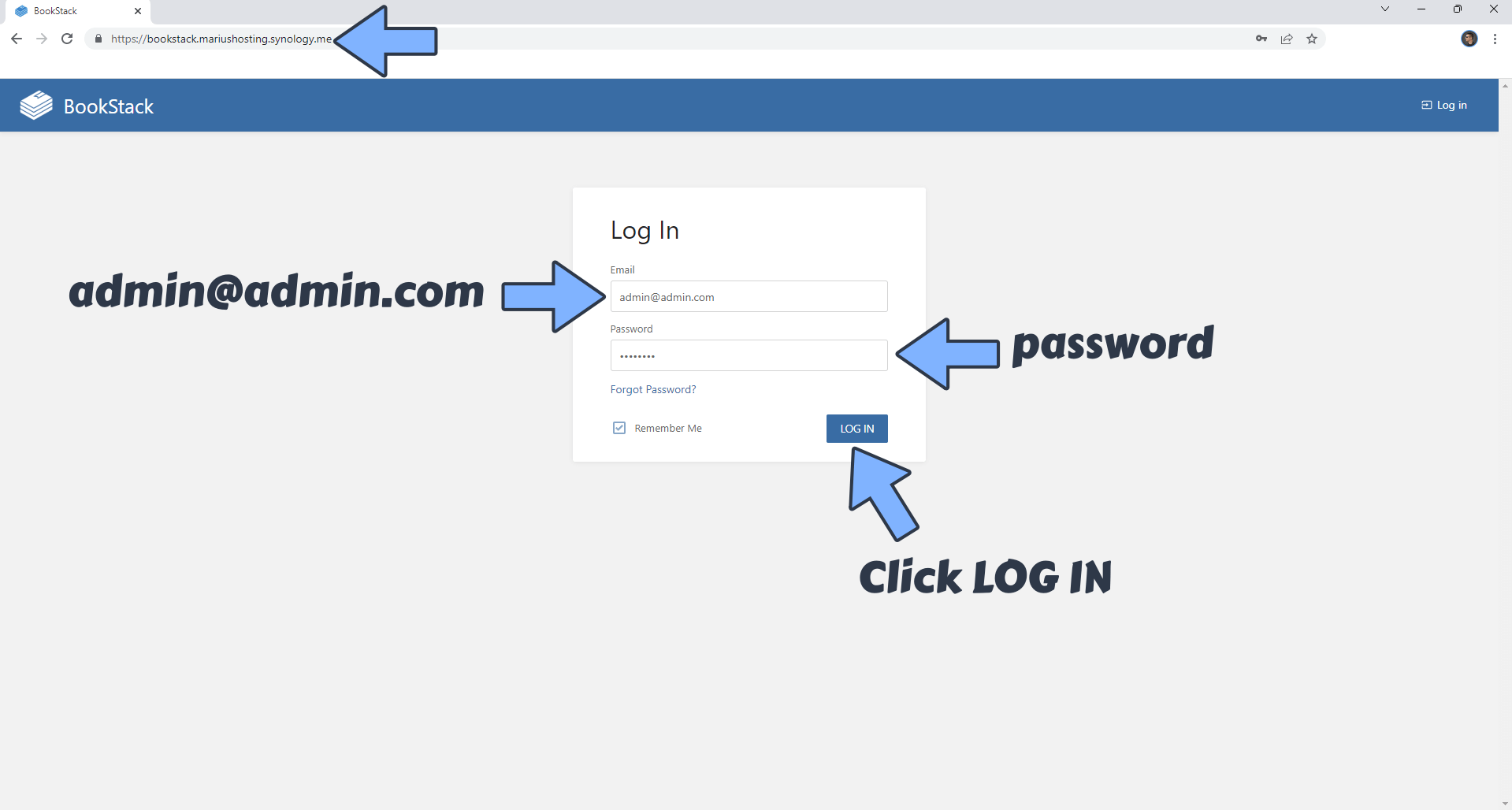
STEP 26
Edit your profile and change the default theme from light to dark, email, password, avatar, language etc. Follow the instructions in the image below.
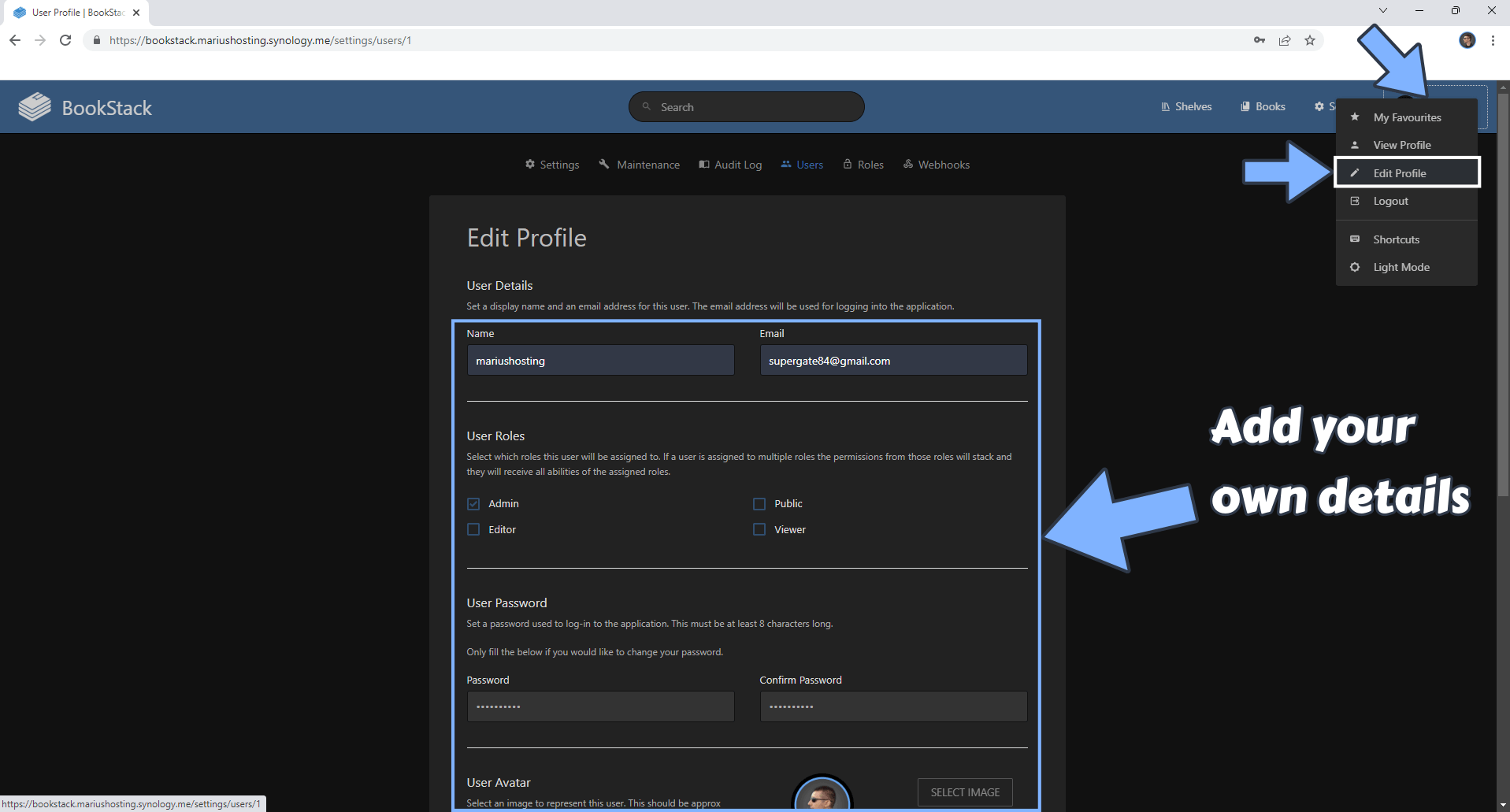
STEP 27
Scroll down the page a little bit, then hit the SAVE button. Follow the instructions in the image below.

STEP 28
At the top right of the page click Settings to Customize your BookStack instance. Follow the instructions in the image below.
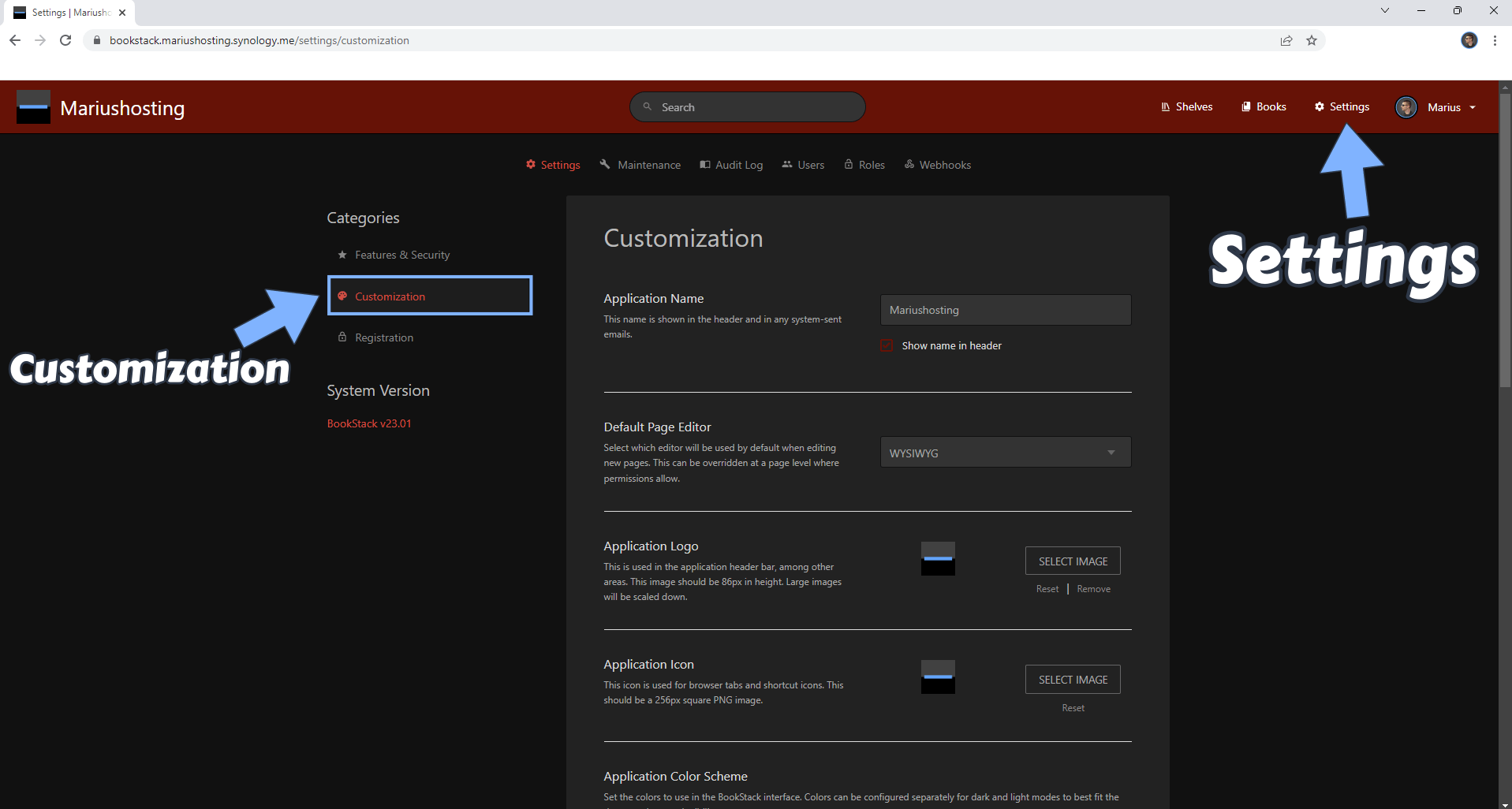
STEP 29
Scroll down the page a little bit then click SAVE SETTINGS. Follow the instructions in the image below.
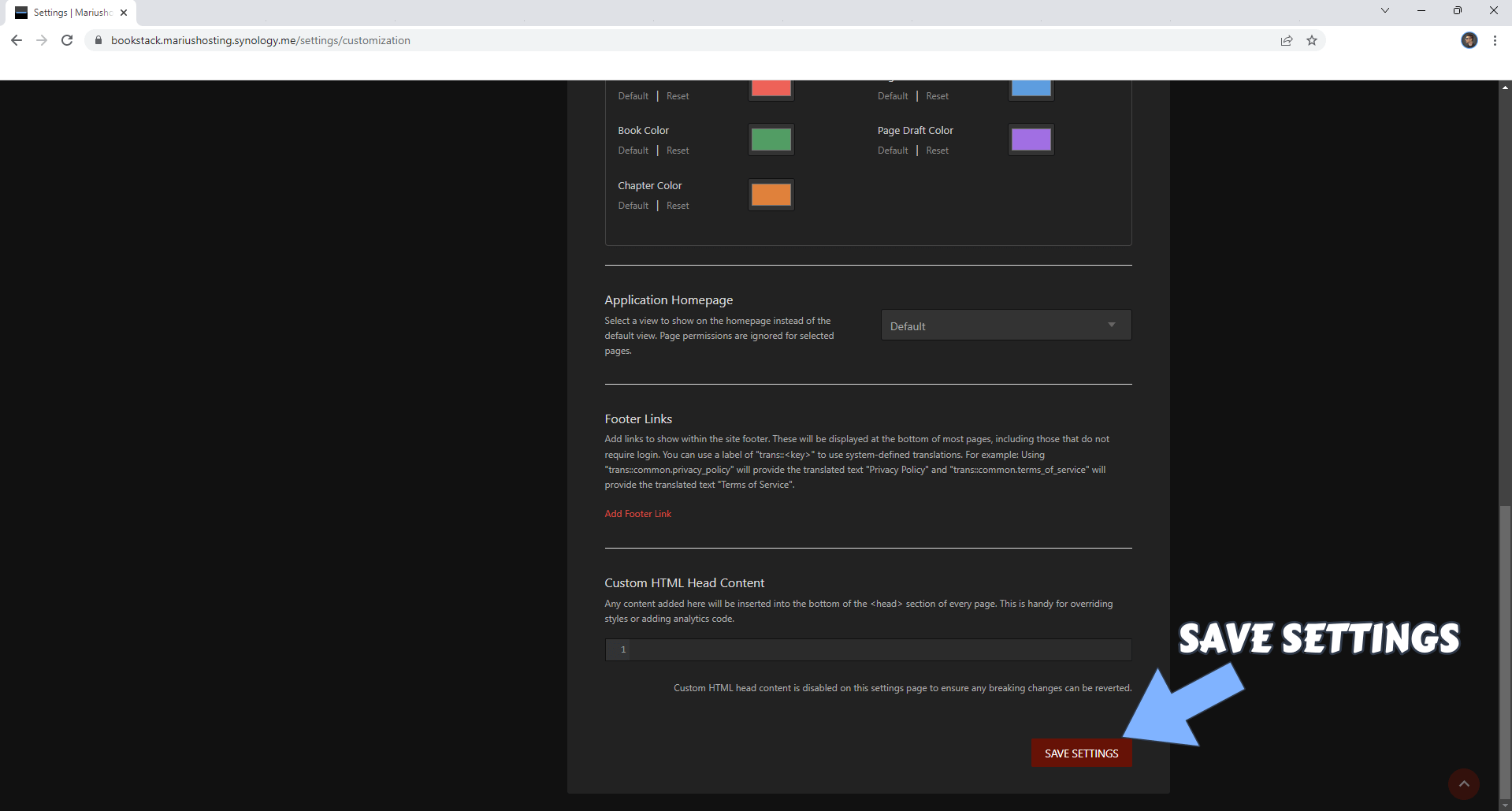
STEP 30
At the top right of the page, click Books to create your new Book. Follow the instructions in the image below
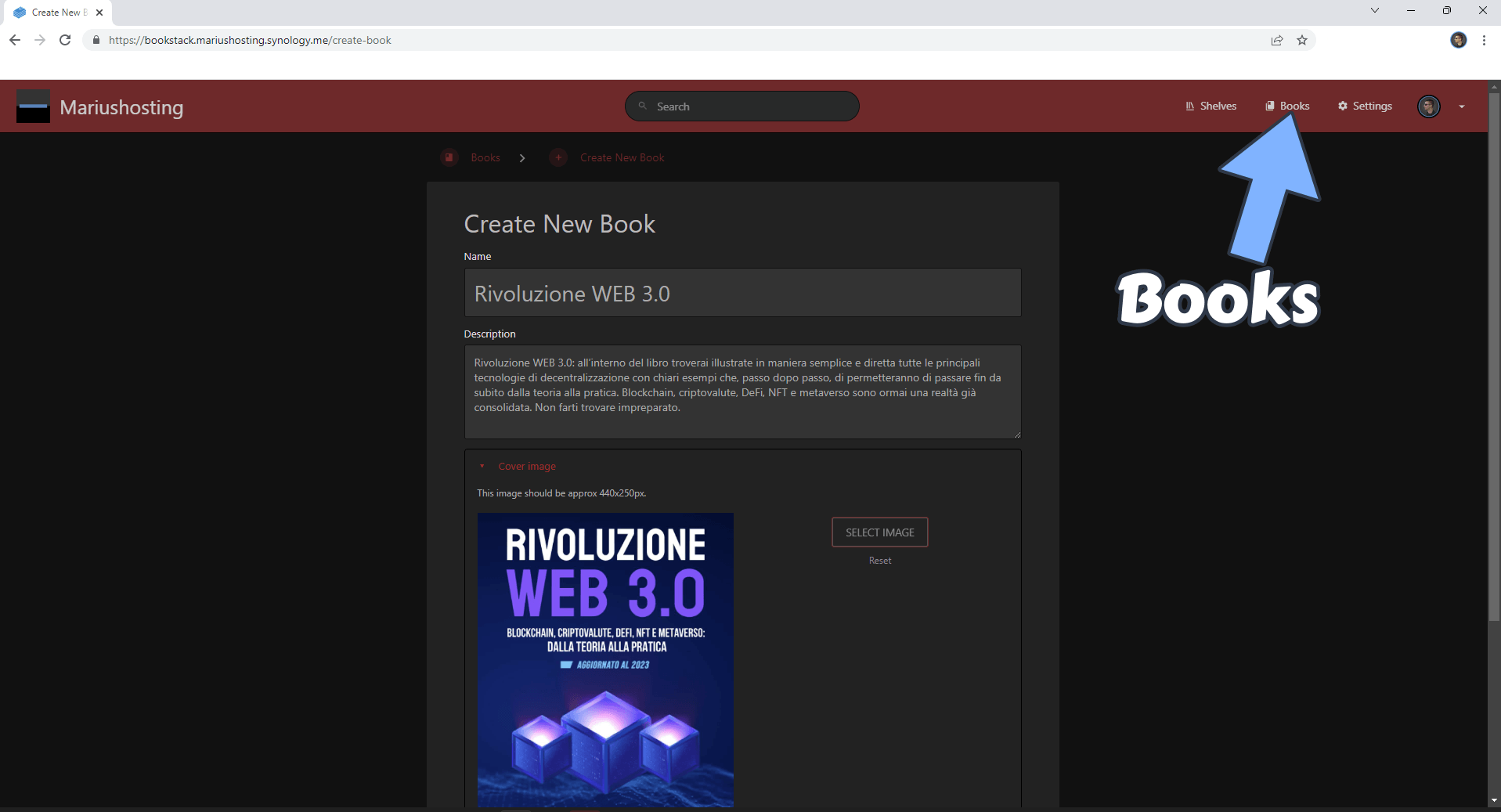
STEP 31
At the top right of the page click Settings then Maintenance. Click SEND TEST EMAIL to test your email. Follow the instructions in the image below.
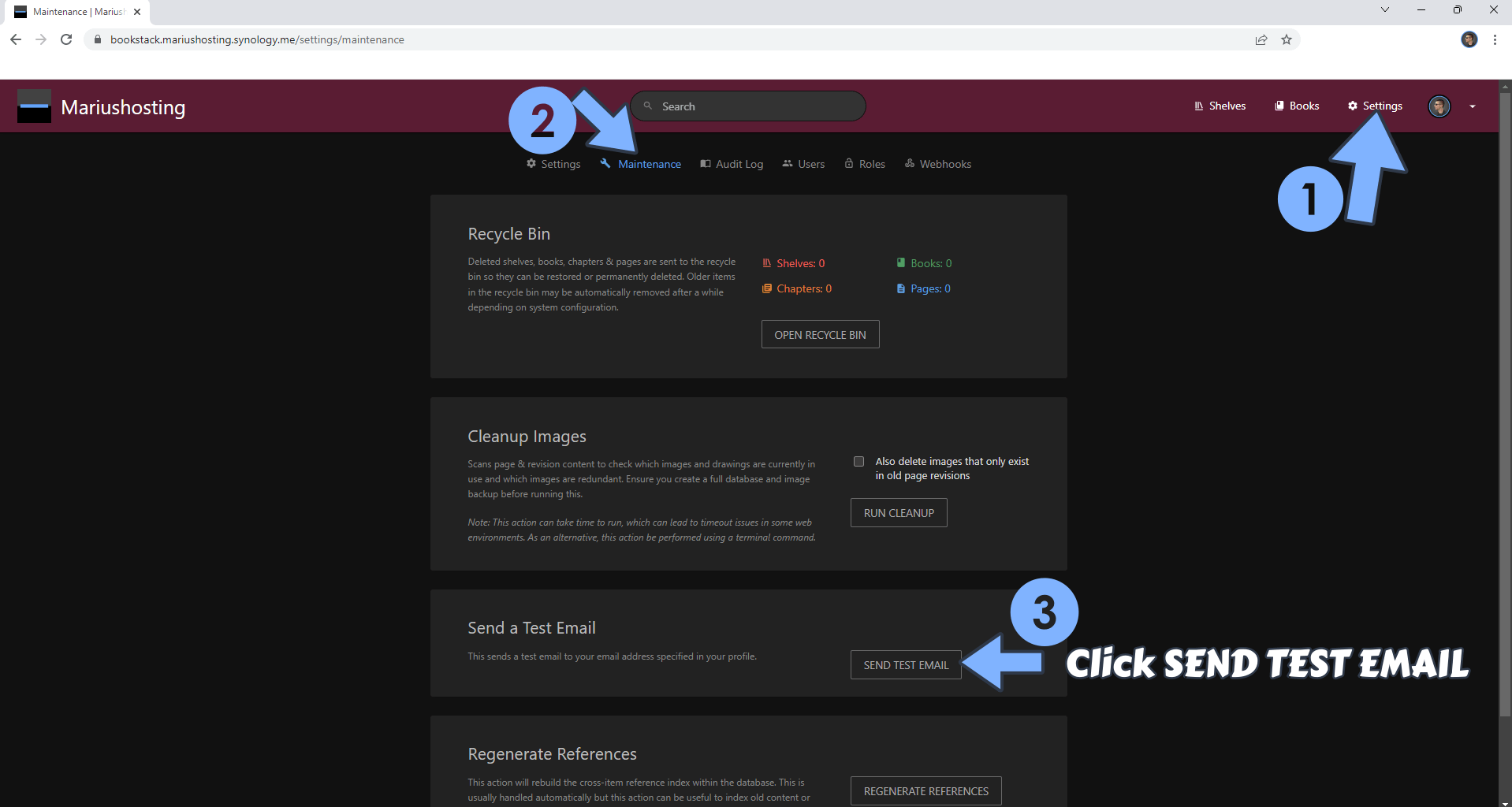
If you correctly Followed STEP 19 and STEP 21, you will receive a successful email confirmation. Email is very useful in case you lose your BookStack password.
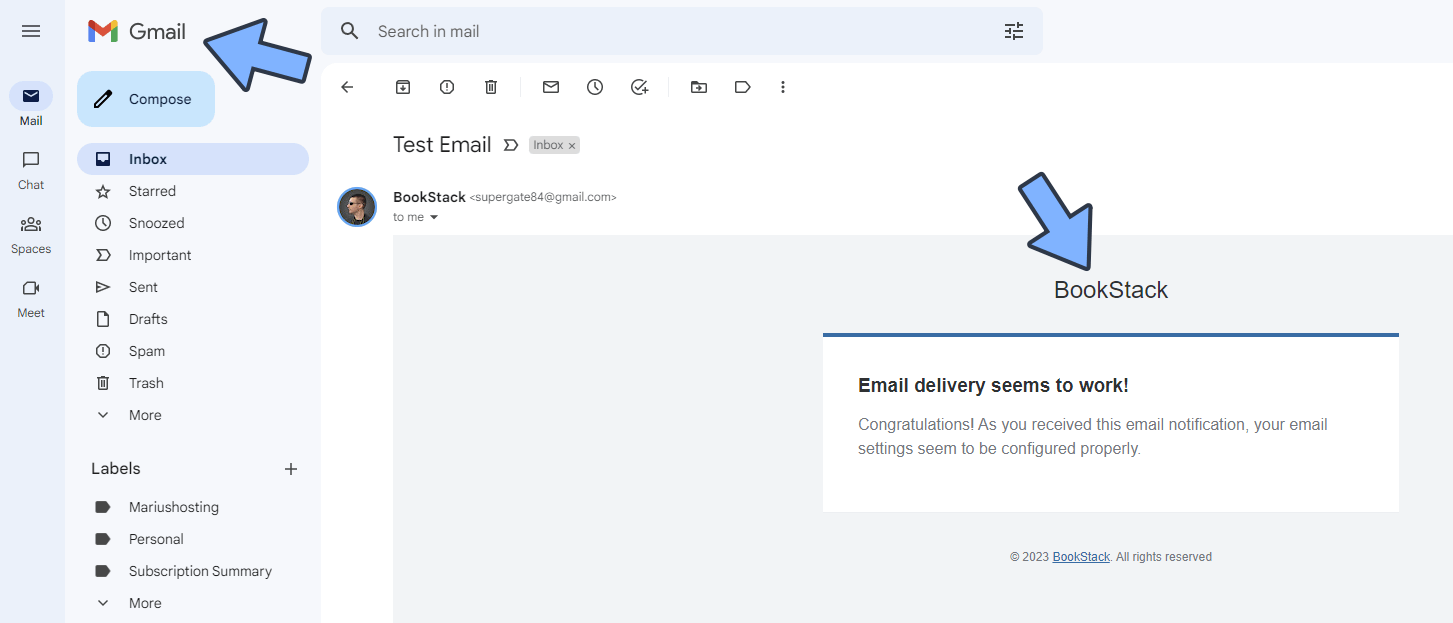
Enjoy BookStack!
If you encounter issues by using this container, make sure to check out the Common Docker issues article.
Note: Find out how to update the Bookstack container with the latest image.
Note: How to Back Up Docker Containers on your Synology NAS.
Note: Can I run Docker on my Synology NAS? See the supported models.
Note: How to Free Disk Space on Your NAS if You Run Docker.
Note: How to Schedule Start & Stop For Docker Containers.
Note: How to Activate Email Notifications.
Note: How to Add Access Control Profile on Your NAS.
Note: How to Change Docker Containers Restart Policy.
Note: How to Use Docker Containers With VPN.
Note: Convert Docker Run Into Docker Compose.
Note: How to Clean Docker.
Note: How to Clean Docker Automatically.
Note: Best Practices When Using Docker and DDNS.
Note: Some Docker Containers Need WebSocket.
Note: Find out the Best NAS Models For Docker.
Note: Activate Gmail SMTP For Docker Containers.
This post was updated on Saturday / December 20th, 2025 at 9:39 PM
